Butterflies and Birds
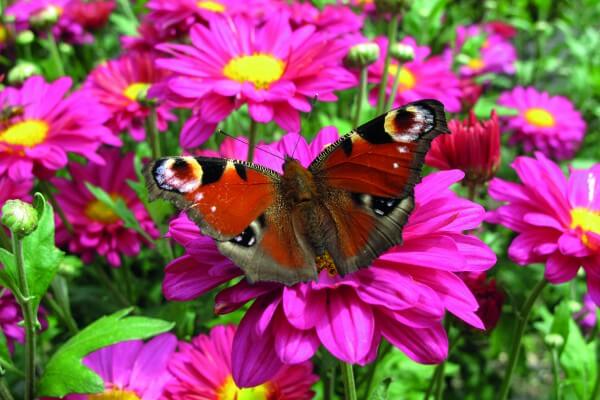
Attract more wildlife to your garden by making it a haven for them
Main image: Peacock butterfly © RHS Katy Prentice
If you’ve got a garden then you’re definitely one of the lucky ones – having an outside space to call our own is a godsend, and never more so than over the last few months.
You probably know that, thanks to the changing nature of our gardens – plants, flowers and lawns are giving way to more concrete, decking and gravel – sadly the numbers of birds and butterflies are dwindling.
Previously we’ve looked at how to attract bees and hedgehogs to our gardens, so in this issue we look at how you can attract more butterflies and birds with some simple changes.
So get the whole family involved and make your garden a sanctuary for wildlife this summer.
Butterflies
Butterflies are more than just a pretty addition to our world. The fact is, they’re essential.
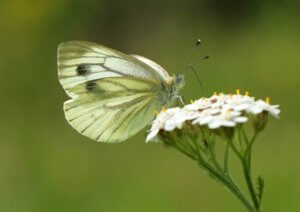
Like bees, they help to pollinate flowers. The caterpillar larvae eat the plants and provide an important food source for other animals including birds, small mammals and spiders.
But even more importantly, because they’re so sensitive to changes in their ecosystem, they’re a useful barometer for scientists to identify changes and problems in local environments – and loss of habitat is one of the biggest and most damaging changes.
Sadly their habitats have faced catastrophic declines and once-common species like the small tortoiseshell have dropped by up to 80 per cent in the last 30 years in some areas.
Earlier this year, The Wildlife Trust and Royal Horticultural Society launched their Grow A Secret Garden For Butterflies campaign, which calls on gardeners to pledge a bit of garden or outdoor space to help the UK’s falling numbers of butterflies and moths. They’re then asking for you to add it to their online interactive map. The website also gives some great tips for attracting butterflies to your garden.
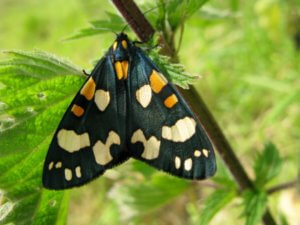
‘Our garden flowers and plants provide a rich source of rejuvenating nectar for these much-loved garden visitors as they emerge from hibernation to herald the start of spring,’ says The Wildlife Trusts’ gardening champion, horticulturist and TV presenter Frances Tophill. ‘Leave dandelions and daisies in the lawn to provide a meal, aim for year-round flowers and include a wildflower area for egg-laying females as well as gardeners’ favourites like lavender, nasturtium and verbena.’
Helen Bostock, Senior Horticultural Advisor at the RHS adds:
‘With many of their natural habitats under threat, consider rewilding an area of the garden to provide food and shelter, or sacrificing a patch of plants – for example, a window box bursting with nasturtiums will help attract large white butterflies away from your cabbage crop.’
www.wildaboutgardens.org.uk
What to plant and when will it flower?
Spring: Primroses, sweet William, native bluebells, forget-me-nots, cuckoo flower
Summer: Cornflower, French marigold, marjoram, scavious, thistle, purple loosestrife, hemp agimony, bramble, and many herbs including marjoram, thyme, lavender and sage
Autumn: Flowering ivy, asters, ice plant, hebe, buddleia, verbena
Top larval food plants
- Lady’s smock (orange tip butterfly)
- Bird’s foot trefoil (common blue butterfly)
- Common sorrel (small copper butterfly)
- Fescue grass (meadow brown butterfly)
- Ivy and holly (holly blue butterfly
- Nasturtium (holly blue butterfly)
Why not help find out more about butterfly populations?
The Big Butterfly Count is a nationwide survey by the charity Butterfly Conservation, aimed at helping them assess the health of the environment. Launched in 2010, more than 113,500 people took part last year, submitting more than 116,000 counts of butterflies and moths across the UK. www.bigbutterflycount.org
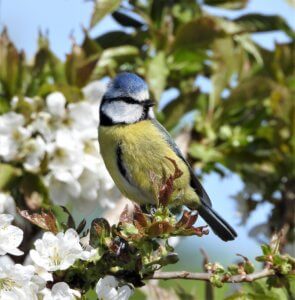
Birds
Who wouldn’t want to enjoy birdsong in their garden? Wild birds are a joy to watch and hear in the garden, and with a decrease in natural habitats causing a drop in native bird numbers too, it’s important to provide a welcoming environment for them all year round. There’s plenty advice on the RSPB website, but these are the most important points.
Food
Birds need food all year round. During the summer, this can be from natural sources such as berries, seeds and grass. But during the winter these are harder to come by. Birds also need more food during cold weather to stay warm. Provide a bird feeder – but keep it far enough away from bushes and trees so cats can’t hide before pouncing!
Make your own fat ball. All you need is some yogurt pots, string, lard, cheese and some seeds. Make a hole in the bottom of the yogurt pot and thread some string through it. Add seeds and grated cheese to the pot, then pour in melted lard. Once it’s cooled and set, remove the yogurt pot and hang from a tree.
Shelter
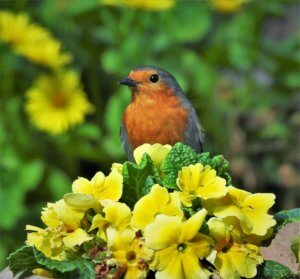
Birds need shelter from predators and from the cold nights. Dense conifers, trees and shrubs are perfect during the summer. In the winter, why not try building a bird box?
Water
Water is essential for birds for drinking and bathing. Bathing helps them keep their feathers easier to preen, which in turn helps insulate them against the cold. But make sure it doesn’t freeze over in winter, and keep the water fresh.
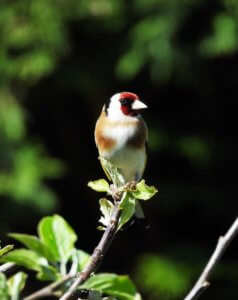
Keep it clean
Feeders, baths and bird houses all need to be kept clean so that they don’t harbour bacteria that’s harmful to birds. They should be cleaned out once a year but remember not to disturb birds nesting in the spring.
For more information go to:
www.hertswildlifetrust.org.uk
www.rhs.org.uk
www.bbowt.org.uk
